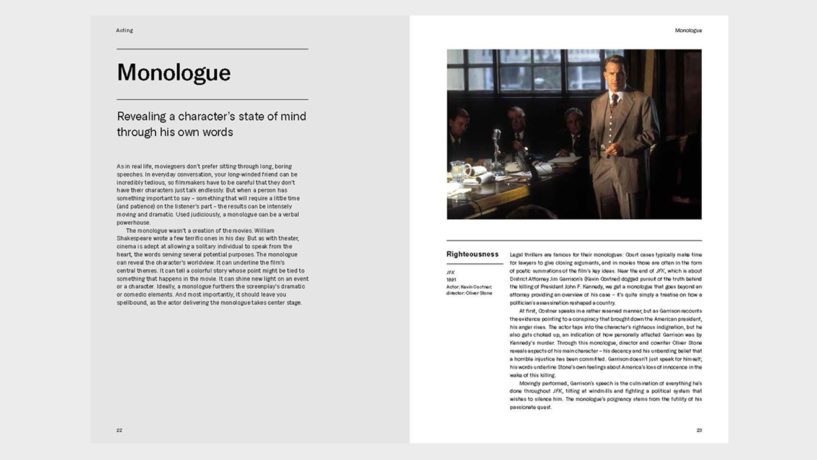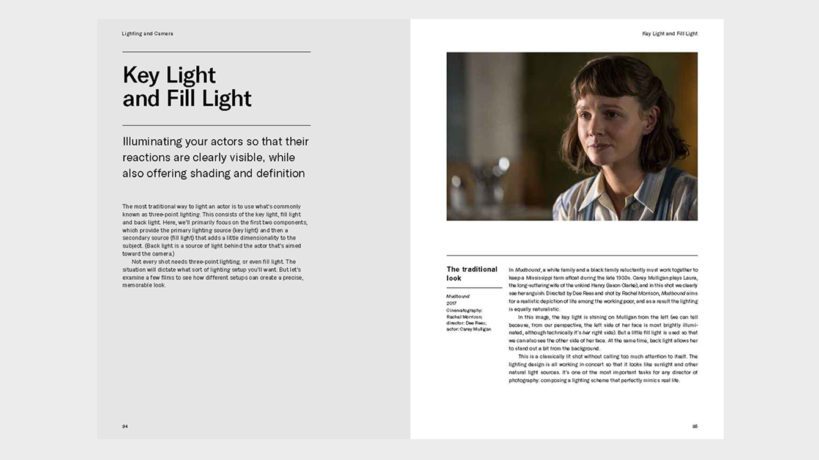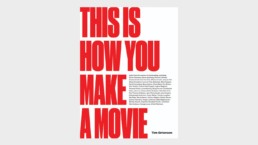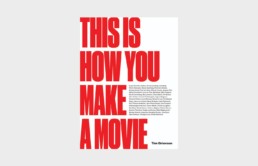‘This Is How You Make a Movie’ Pairs Film Techniques With Popular Films
Be a better film buff by understanding your favorite movies better
Chances are that if you love movies as much as I do, This Is How You Make a Movie will be a worthy addition to your film book collection.
While most of us have a favorite genre and/or filmmaker, we might not even be aware of why we feel a certain way towards these particular films, even our favorites.
And yet all of the decisions that go into a film – not just those from directors, but from the actors, editors, and entire filmmaking team – are right there on the screen, just waiting to be decoded by viewers.
The best films in cinema use a multitude of filmmaking techniques that highlight the subtextual elements of their stories, which add even deeper meaning than the words or images could do alone.
For example: how does the opening slow pan in Peter Bogdanovich’s The Last Picture Show perfectly introduce us to the world of the film’s rural and sleepy suburban town?
How does director Steve McQueen use the rule of thirds to highlight electricity between the characters in Shame?
And why does Andrea Arnold’s decision to use a 4:3 aspect ratio in American Honey make sense to emphasize the individuals in the film?
If these kinds of questions interest you, then keep reading, as I got my hands on a newly published book titled This Is How You Make a Movie, which explains the terms, processes, and techniques seen in classic and contemporary films, to help you watch and understand films better.
The Design (The Outside)
 If you’re anything like me, you might own 5, 10, or even more books on film. Most that you’ve read, some that you’ve lightly read, and a few that you haven’t really committed to at all.
If you’re anything like me, you might own 5, 10, or even more books on film. Most that you’ve read, some that you’ve lightly read, and a few that you haven’t really committed to at all.
They all either explain the general history of film or how to make a movie in more production-focused terms. So what makes this book different than the rest?
Two things: For one, it’s beautifully designed. And second, it’s such a succinct book, which focuses on breaking down filmmaking terms like a dictionary would, and provides examples from films to illustrate those points.
It has a coffee table design and a hardcover treatment. Coffee table books need to be visually appealing since most of their life is being prominently displayed while closed.
Its publisher, Laurence King (based out of London), is in the business of making beautiful-looking books and gifts on film and art, which applies to this book as well.
This isn’t a dog-eared, paperback textbook you might still have kept from college. It’s a simple, intelligently designed book, and is meant to be displayed on a table or anywhere in your home.
Its two-tone color-pairing makes for a wonderful harmony. And its sans-serif fonts are smartly chosen, giving a modern touch.
And finally, its size and weight are accessible. You can pick it up and put it down, reading a few sections at a time, all at your leisure.
The Content (The Inside)

As I mentioned before, this isn’t a chronological step-by-step guide for how to make a movie. This is great because all of the books that do that are also limited by the technology that they advise you to use (which sort of video camera, and the editing software that’s already outdated).
This is How You Make a Movie is more or less an encyclopedic look at the techniques and terms that are used in the best films, which the book’s author, Tim Grierson, succinctly and elegantly breaks down.
The book includes 5 sections:
- Acting
- Directing
- Lighting & Camera
- Editing
- Writing
Within these sections are further sub-sections. So in acting, we get breakdowns of “method acting” – popularized by Marlon Brando in A Streetcar Named Desire – through improvisation, seen in Knocked Up and Girls Trip.

And again, these are simply, succinctly written. 1 or 2 paragraphs with negative space to hammer the approachable design home. So you truly can take this book in sections at a time.
Classic films from City Lights, The Godfather, Star Wars, and The Shining, to more contemporary works like Moonlight, Good Time, We Need to Talk About Kevin, and Deadpool.
Directors like Stanley Kubrick, Alfred Hitchcock, and Charlie Chaplin are also nested alongside the more diverse filmmakers of today, such as Barry Jenkins, Andrea Arnold, Kathryn Bigelow, and the Dardenne Brothers.
My favorite section of the book (which I didn’t know before reading) was in the Lighting & Camera section, which discussed “Chiaroscuro.” Chiaroscuro, as I learned, is a lighting technique in which the protagonist is prominently in focus against a fuzzy background fuzzy (or, with a shallow depth of field).
Lighting can enhance this even further, which Gordon Willis did in The Godfather’s “I’ll make him an offer he can’t refuse” scene. The effect goes back to Caravaggio and Rembrandt, and how those masters introduced this technique in their paintings.
I didn’t know this before reading this book, and now I get to make that observation the next time I’m watching The Godfather with my family and friends.
But really, reading This Is How You Make a Movie does make me appreciate my favorite films and the artistry in them even more, which is what it will do for you.
So, are you going to pick up a copy of this book for yourself, a family member, or a friend? It’s the perfect way to learn more about why you love your favorite film, by better understanding the techniques that went into the technique (or vice-versa).
A beautifully designed, succinct, and smartly written book will always have a place in my film book collection, as it should in yours too.
You can order This Is How To Make a Movie now here at Laurence King’s website.
Ryan Rojas
Ryan is the editorial manager of Cinemacy, which he co-runs with his older sister, Morgan. Ryan is a member of the Hollywood Critics Association. Ryan's favorite films include 2001: A Space Odyssey, The Social Network, and The Master.


